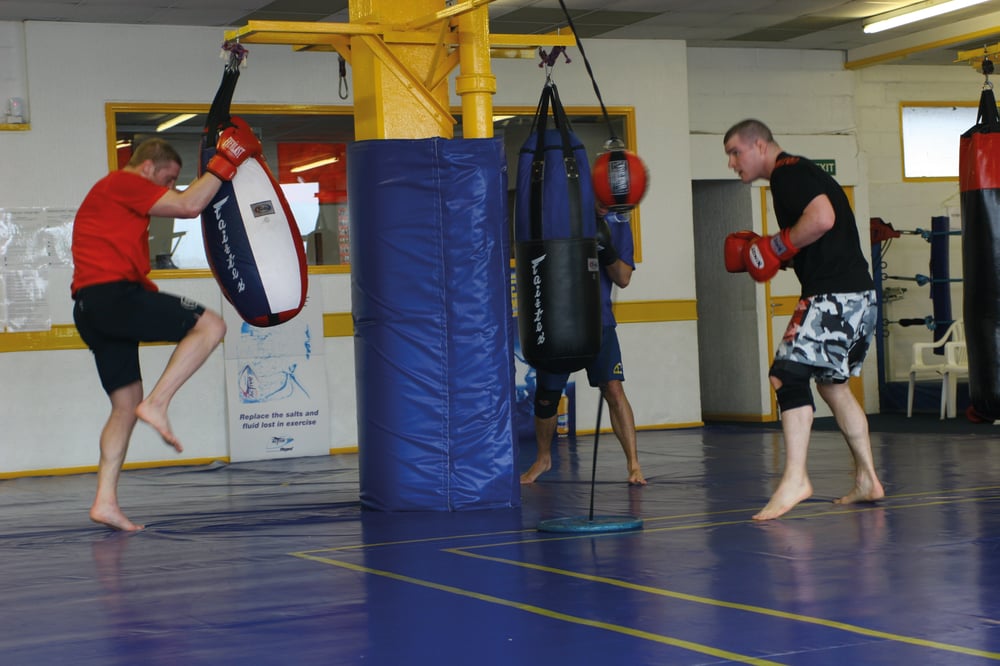
Issue 052
July 2009
Why use them?
Punch bags are a great tool for working on your striking. You can work on technique, power, endurance, movement and combinations, all without a training partner.
When would you use them?
Bag work can be a supplement to pad work and sparring, either as part of a training session or as a whole training session by itself. Fighters often use rounds of bag work as part of their fitness training. A good sized heavy bag can also double as a floor bag for working ground ‘n pound.
Types of punch bag
There are many different types of punch bag, each suited to a different kind of training. Here are the main ones you may want to consider:
- Heavy bag: A tall cylindrical bag which, as the name suggests, has enough weight behind it to absorb powerful shots.
- Hook and uppercut bag: Usually somewhat smaller and lighter than a heavy bag, these are shaped with an angled surface for working a range of different shots.
- Banana bag: Longer, thinner and lighter than a heavy bag, these tend to be used for more Muay Thai-style training and are ideal for working kicks.
- Standing bag: These have a base (usually filled with water) that supports a freestanding punch bag. Even the most stable models can be knocked over by powerful strikes, but they may be worth considering if you have nowhere to hang a heavy bag.
- Speed ball: Most commonly used in boxing training, these are much smaller and lighter. They are designed for working fast hand-movement, learning to keep the hands up and developing hand-to-eye coordination.
- Floor to ceiling ball: Similar to speed balls, but attached to both floor and ceiling by elastic so that they rebound when hit. Good for working on accuracy on a moving target, speed, footwork and body movement.

Materials
Punch bags can be made from a range of different materials. Leather or heavy-duty PVC bags are likely to be the most durable. It may be possible to buy cheaper bags made from nylon or canvas, but if it is being used frequently then it may need replacing before very long.
Stuffing
Bags often come pre-filled, or for a cheaper option you can buy them empty to stuff yourself (this isn’t always as easy as you might think). Rags are most commonly used, or occasionally foam rubber. How tightly they are packed will determine how heavy the bag is, and how it feels to hit. Sand can be added to increase the weight, but using sand alone will make the bag extremely hard and isn’t recommended. A few years ago, Costco were found to be selling punch bags filled with smelly underwear!
GENERAL TIPS
Get the right punch bag for the job
When choosing a punch bag, bear in mind what you want to use it for as well as the space you have available. The weight is also important – a bag that is too light will be frustrating to train with, whereas one that is too heavy can lead to bad habits and even injury.
Hanging a punch bag
Before you buy that punch bag you have your heart set on, think for a minute about where you’re going to hang it. Installing a heavy bag in your garden shed is asking for trouble. Remember that a lot of force will be going through that bag (you hope), and we’ve heard horror stories about people bringing part of their house down with badly mounted equipment. Make sure you do your homework first.
Protect your hands
Strikers commonly suffer from hand and wrist problems, and wear and tear in the joints can build up over years of training. This can be minimized by always wrapping your hands properly whenever you do bag or pad work.










